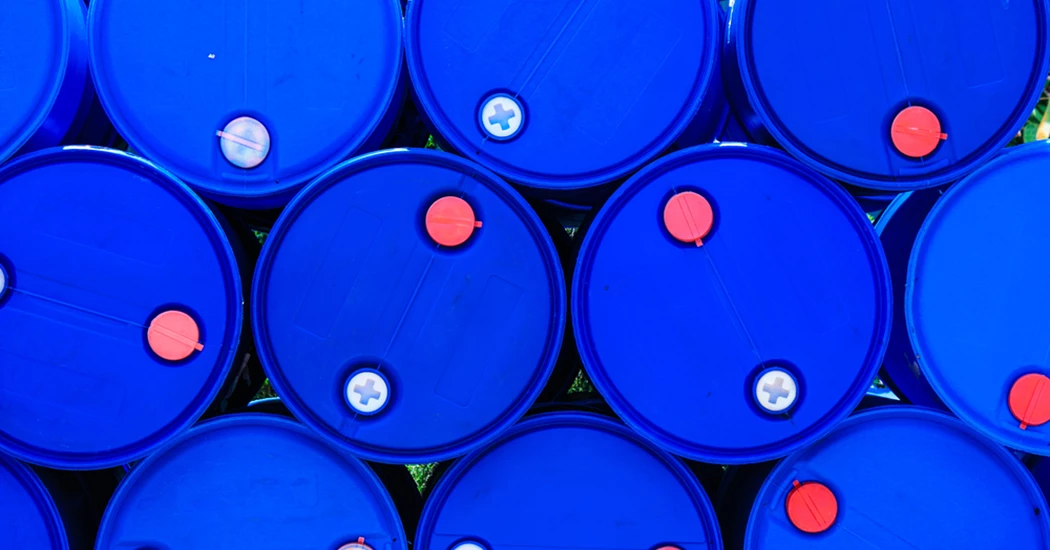OPEC-IEA demand divide deepens, leaving oil market guessing
The gulf between 2025 global oil demand growth estimates from OPEC and the International Energy Agency (IEA) has widened to 610,000 b/d in their latest short-term outlooks, the biggest in nine months and one that continues to puzzle market participants.
In its latest monthly market outlook, the IEA forecasted 2025 global consumption will average 103.74 million b/d, an increase of 690,000 b/d over 2024. OPEC held its demand forecast steady from the previous month at 105.14 million b/d, implying growth of 1.30 million b/d. The US Energy Information Administration (EIA) sits in between, forecasting a 980,000 b/d rise to 103.72 million b/d.
Short-term market signals
Methodological differences explain part of the divergence – including the variation in absolute demand figures – but monthly revisions and the accompanying rationale are key, particularly in the case of major swings, as they offer important short-term signals to market participants.
All three agencies cut their 2025 global demand growth forecasts in April, after Trump’s “Liberation Day” reciprocal tariffs shocked markets and triggered a sharp downgrade in the global economic outlook.
As the initial jolt gave way to a suspension of the punitive levies during trade talks, the EIA and OPEC nudged their consumption growth estimates higher, but the IEA kept trimming. Its latest growth forecast is the lowest since its first began publishing 2025 projections in April last year.
The IEA’s August report actually raised the 2025 oil consumption estimate to 103.74 million b/d from 103.68 million b/d in July. But a simultaneous upgrade in the 2024 demand estimate effectively reduced the implied annual growth for this year.
Impact on estimates
The agency had also bumped up its 2024 demand estimate in May this year – by a sizeable 350,000 b/d to 103.16 million b/d – citing newly available annual demand submissions, mostly from Egypt and Nigeria, which had impacted its estimates all the way back to 2022. But it subsequently whittled that figure down to a low of 102.98 million b/d in July.
Revisions in historical demand estimates are not unique to the IEA, but large or frequent adjustments can be problematic. A shifting baseline ends up muddying the picture by inflating or shrinking implied growth for subsequent years without necessarily correlating to an acceleration or deceleration.
The IEA has modified both its 2023 and 2024 demand estimates every month since January this year, while OPEC and the EIA have made only two modest adjustments to their 2024 numbers over the same period.
Emerging markets at the core of divergence
The IEA’s latest 2025 demand downgrade stems entirely from non-OECD countries, with consumption in China, India and Brazil consistently undershooting expectations in recent months.
OPEC notes that while non-OECD and OECD Asia-Pacific demand underperformed in Q1, it was offset by stronger-than-expected consumption in OECD Americas and Europe.
Most notably, the IEA has slashed its projected Chinese growth for this year to just 90,000 b/d, taking consumption to 16.72 million b/d – down from 220,000 b/d forecasted at the start of this year. OPEC and the EIA, in contrast, still peg Chinese increase closer to 200,000 b/d.
The EIA’s downgrade of Chinese demand in a matter of months sits uneasily with its narrative of a drag from longer-term structural shifts in transport and tourism, such a fast-growing EV penetration and a tilt towards lower-budget and more local travel after the pandemic. Those forces evolve gradually and should already be baked into the baseline.
Wide divergence on market balances
The IEA’s extremely bearish stance carries through into its balance sheets. The agency expects global liquids supply to average 105.48 million b/d this year, implying a surplus of 1.75 million b/d, with the glut peaking in Q4 at 3.09 million b/d.
The agency expects oversupply to persist into 2026, averaging 1.44 million b/d.
While OPEC+ supply is rising with the accelerated unwinding of the 2.2 million b/d in voluntary cuts by the Group of 8, the IEA sees stronger production growth outside the alliance — at 1.3 million b/d this year and 1 million b/d next year — on the back of US NGLs, Canadian crude, and offshore output in the US, Brazil and Guyana.
The EIA similarly projects global inventories building by 2.10 million b/d in Q4, with the surplus averaging 1.63 million b/d across 2025. It also expects robust supply growth from Argentina, Brazil and Guyana in both 2025 and 2026.
OPEC sees a much tighter market. Its balances point to deficits of 780,000 b/d in Q1 and 160,000 b/d in Q2 this year. It does not publish OPEC+ production forecasts, but extrapolating from its projected non-OPEC+ supply and assuming no changes in OPEC+ targets in 2025 and 2026, implied balances suggest a slight deficit through 2025 and on average in 2026.
Which outlook to trust?
On balance, OPEC’s estimates may be the most grounded in observable trends to date, particularly its treatment of offsetting regional growth and lack of speculative assumptions.
The IEA’s prolonged oversupply narrative hinges on continued weak demand in key emerging markets and aggressive non-OPEC production growth — a plausible, but far-from-assured, scenario.
The divergence leaves oil market participants with little usable consensus, underscoring the need for close monitoring of real-time supply and demand indicators as the year progresses.
The IEA and the EIA’s H1 2025 surplus estimates also run counter to the persistent backwardation in both sweet and sour benchmark crude futures through the period — a structure where prompt barrels are priced higher than those loading farther out in time, which typically reflects tighter balances.
If the forecasted Q4 surplus of 2-3 million b/d does materialise, a flip to contango should be expected. For now, that is not our base case.
Energy Connects includes information by a variety of sources, such as contributing experts, external journalists and comments from attendees of our events, which may contain personal opinion of others. All opinions expressed are solely the views of the author(s) and do not necessarily reflect the opinions of Energy Connects, dmg events, its parent company DMGT or any affiliates of the same.






